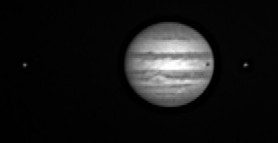 Click here for an animation of Jupiter over 4.2 hours (466 kbytes) (ST-10XME, no filter, f/38), 2003 March 25 (AVI file for Windows Media Player), by Greg Morgan. A full descrption is here: Io transits Jupiter, its shadow follows, then Europa emerges from left. |
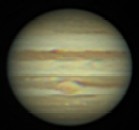 Jupiter and its Great Red Spot, 2003 February 23 at 6:13 UT, full-color (255 images taken in 30 min, 42 used: R 10 x 0.33s, G 14 x 0.33s, B 18 x 0.33s) ST-10XME eyepiece projection at f/38 (click here for a short animation with no filter) (AVI file for Windows Media Player), by Greg Morgan. |
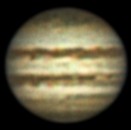 Jupiter at opposition, 2003 February 1, full-color (255 images taken in 30 min, 52 used: L 13 x 0.11s, R 4 x 0.33s, G 12 x 0.33s, B 23 x 0.33s) ST-10XME eyepiece projection at f/38 by Greg Morgan. |
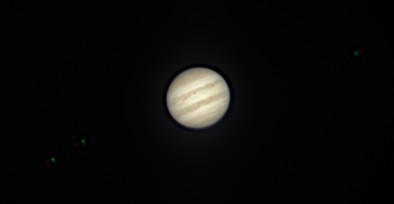 Jupiter and its moons, 2004 March 19 at 05:00 UT, full-color ST-7XE LRGB image at f/6.3 by Dan Chase and Scott Endler. The moons reproduced as red and green spots, because of the way the color image was taken, one filter at a time. From west (left) to east (right), the moons are Io, Europa, and (on the east side of Jupiter) Callisto. The Great Red Spot is just visible, on the western limb. |
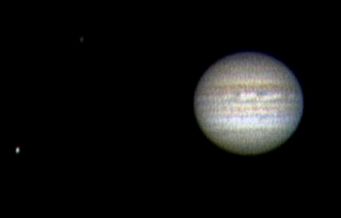 Jupiter and its moons, 2007 June 12, full-color wavelet-processed ToUcam image at f/10 by F. Ringwald. |
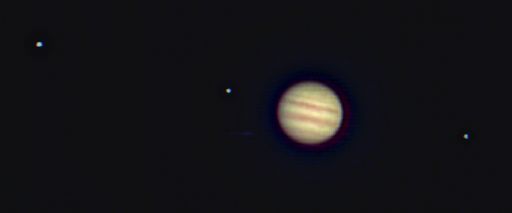
Jupiter and its moons, 2008 October 21, full-color, wavelet-processed ToUcam image through the 70mm guidescope at f/22.9 (with two 2x Barlow lenses) at 30 fps for Jupiter (27 of 1144) and 50 fps (9 of 516) for the moons, combined with Photoshop, observed and processed by Randy Clark.

Jupiter and its moons, sharpened 0.12-second ST-8 exposure at f/10 through the focus mask by F. Ringwald.
Click here to go to the Main Gallery
Last updated 2024 April 26. Web page by Professor Ringwald (ringwald[at]csufresno.edu and replace [at] with @)
Department of Physics, California State University, Fresno. Please read this disclaimer.